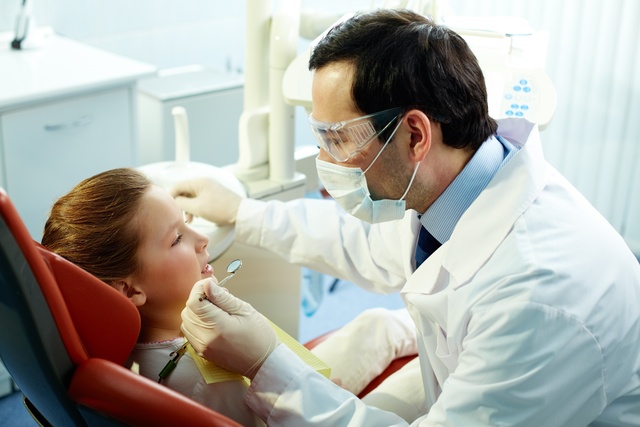Hospitals might not be the obvious place to seek dental treatment for children, but thousands of Australian families are doing just that each year.
Most of the dental conditions requiring this treatment could have been prevented, according to the Australian Dental Association (ADA).
Its latest consumer survey of more than 25,000 people revealed factors contributing to infant and child tooth decay ranged from excessive fruit juice and soft drink consumption to not starting dental visits early enough, not accessing government-funded free dental entitlements, and only taking children to the family dentist when there was a problem.
Another survey, The Children and Young People Oral Health Tracker, showed nearly 11 (10.8) in every 1000 children aged 5 to 9 were hospitalised for potentially preventable problems due to dental conditions.
It also found only 56 percent of children visited the dentist before age 5.
“Often it’s a case of people just not being aware of all the facts,” ADA oral health promoter Dr Mikaela Chinotti said.
The ADA Consumer Survey’s new findings uncovered widely-held misconceptions about when parents think children are meant to have their first dental visit.
Only five percent said before 12 months and 20 percent at one year old.
The majority – 42 percent – said at 2 years old. Nineteen percent said age 3 and four percent age 4.
Dentists recommend the first dental visit when an infant’s first tooth or teeth emerge, typically before or around age one.
One-third (32 percent) of parents reported their child’s first visit was for pain or a problem.
“A first dental visit for a toothache may create a negative first experience,” Dr Chinotti said.
“We don’t want that to be your child’s introduction to the dentist.
“It’s important to see the dentist even if you think your child’s teeth are healthy.”
For families eligible for the Child Dental Benefits Schedule, Dr Chinotti said there was no reason to delay the first dental visit, and children aged up to 17 years were eligible.
If picked up early, problems like tooth decay can be controlled fairly simply before they become established and cause trouble.
Dr Chinotti said leaving it until the teeth hurt or break down means simpler interventions are unlikely to work and more complex treatment might be needed.
Tooth decay remains an issue for Australian kids, according to the ADA, with 34 percent of 5 to 6-year-olds having experienced decay in primary or baby teeth, and 27 percent aged 5 to 10 years having untreated tooth decay in primary teeth.
Sugary drinks undoubtedly contribute to this problem, Dr Chinotti said.
The consumer survey showed that while 85 percent of parents were aware soft drinks, energy drinks, and fruit juice lead to decay, 26 percent of children still have fruit juice daily; 37 percent have two to five fruit juices a week, and 37 percent have two to five soft drinks a week.
“As a parent, I know that sometimes we think we’re being kind to our kids by giving them a sweet treat,” Dr Chinotti said.
“But most sugary drinks have no nutritional value.
“These choices are not being kind to them in the long run.
“Sugar causes decay and when left untreated, can result in physical pain and time off school for children as well as financial pain and time off work for parents or carers.”
The ADA survey highlighted that while parents understood that fruit juice contained sugar, they also thought juice had health benefits.
This is promoted in the product advertising and labelling, Dr Chinotti said, aimed purposely to mislead parents.
She said they offered little nutritional benefit and kids were better off having a piece of fresh fruit.








